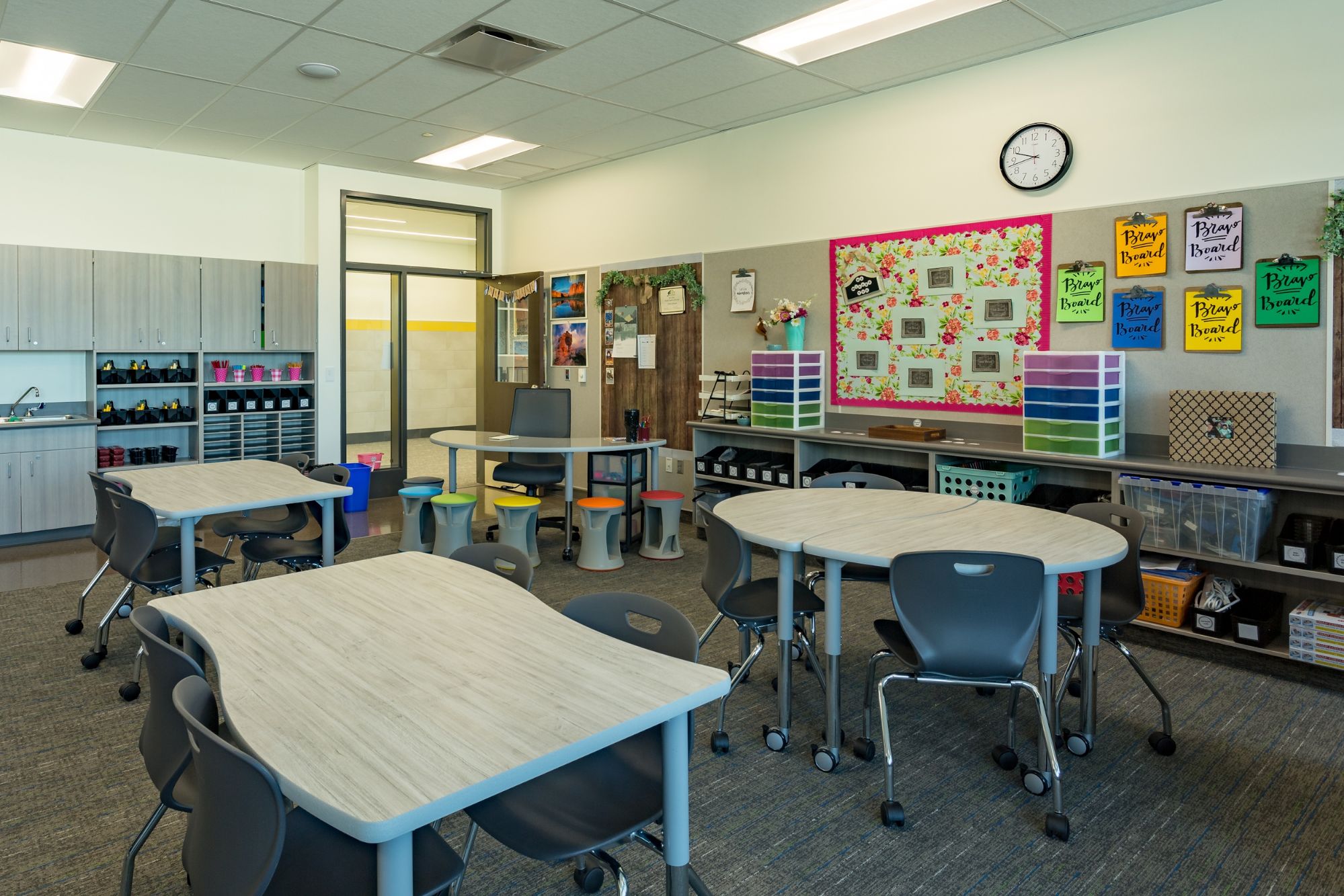Planning Your Flexible Classroom - Part 1
by David Mocton

A flexible classroom is a dynamic learning space, where the setup is constantly changing to create the ideal learning environment for a multitude of activities on any given day. Setting up a flexible classroom is more involved than arranging a traditional classroom because the space is constantly evolving. Rather than thinking about one arrangement that works for the space and the students, you need to be prepared for the unpredictable. While that may sound impossible, with some planning and forethought, you can certainly create a learning space that can easily transform to meet the unlimited creativity of educators and their students.
8 Steps for Planning a Flexible Classroom:
- Let the curriculum drive your plans. Determine whether the curriculum activities will be around for the long term or short term so you can decide to what extent the classroom planning should reflect this particular educational design. Think about whether your students will be working alone and/or in groups based on the curriculum. If you need quiet spaces where students can relax or calm down, these should be noted as well. It makes a big difference which activities the whole class will be doing together at the same time, and which will be done in smaller groups.
- Figure out what kinds of supplies need to be stored in the classroom. Which types of activities you have planned for your space, and how often they occur, will determine what kind of classroom storage you need. You will want to keep any supplies you have organized in the most accessible and efficient way, so it is best to decide in advance what you will need so you can plan for proper storage. The less classroom space you use for organizing supplies, the more room you will have for flexibility.
- Rethink the teacher’s desk. In a flexible classroom, a mobile teacher’s desk can become part of the daily learning. In order to make this a reality, it may be best for the teacher to store their supplies and papers in a different place. That will keep the teacher’s desk lightweight and maneuverable. The teacher’s work area can be an additional group learning space in and of itself, or it can be integrated into a collaborative learning setup.
- Consider classroom size and the number of students. When the classroom is large enough, it can be divided into learning zones. If there is not enough room to have dedicated spaces for certain activities, think about how you can take advantage of mobile furniture to create these spaces as needed, and redistribute the furniture when done. Determine the maximum number of students expected to be in each area at any given time, and plan out the learning zones to accommodate them.
- Determine ideal learning cluster sizes. Selecting the ideal desk shape depends on knowing how many students you prefer to have seated in a learning cluster. Whether you need space for individual work, pairs, or groups of four or more, many desk and table shapes allow for all of these possibilities. Make sure you consider how each of these configurations, for every shape you are considering, will fit inside your learning space.
- Be creative and use what you have. Try to see all of the possibilities that are right there in what you have by thinking outside the box. For example, existing furniture can be used to divide the classroom into zones. Mobile whiteboards, file cabinets, and easels can be arranged in between different learning areas. Desk configuration can also be used to divide various areas. The backside of a white laminate bookcase can be the perfect place to hang artwork, or it can be transformed into a whiteboard work surface for brainstorming, planning, and instruction.
- Know your limits. If your budgetary concerns only allow for small investments, or even none at all, you can still work with what you have. Even if you currently have combo desks, and you don’t plan on replacing them, you can find ways to maximize their flexibility and use them for collaboration. Consider the budget you have and determine what would be the best use of those resources, and which flexible furniture is a wise investment based on how you can use what you already have.
- Plan for technology. No matter which devices you are using in your classroom, you want to ensure that you can keep them hooked up and charged. Think about how many outlets you need and where they should ideally be located in the room. There is plenty of furniture you can get with built-in hookups, including HDMI and USB ports, in order to make connecting and charging as easy as possible. Making smart decisions about where your technology workspaces are, can help you reduce clutter in the classroom and ensure that there aren’t wires strung across the room creating tripping hazards. One option, which allows you to use space efficiently, provide open sight lines, and keep computers properly connected, is creating a long benching work surface along the classroom wall.
Planning for flexibility requires foresight and out-of-the-box thinking. The more you put in to really understanding the potential in your space, letting the curriculum guide you, and thinking of creative ways to use what you have, the better you will be able to maximize the potential of your space. The future is in the flexible classroom. The better job we do of identifying the best way to plan for it, the more and the better our students will learn in flexible learning spaces.
Read Flexible Classrooms Part 2 here.

